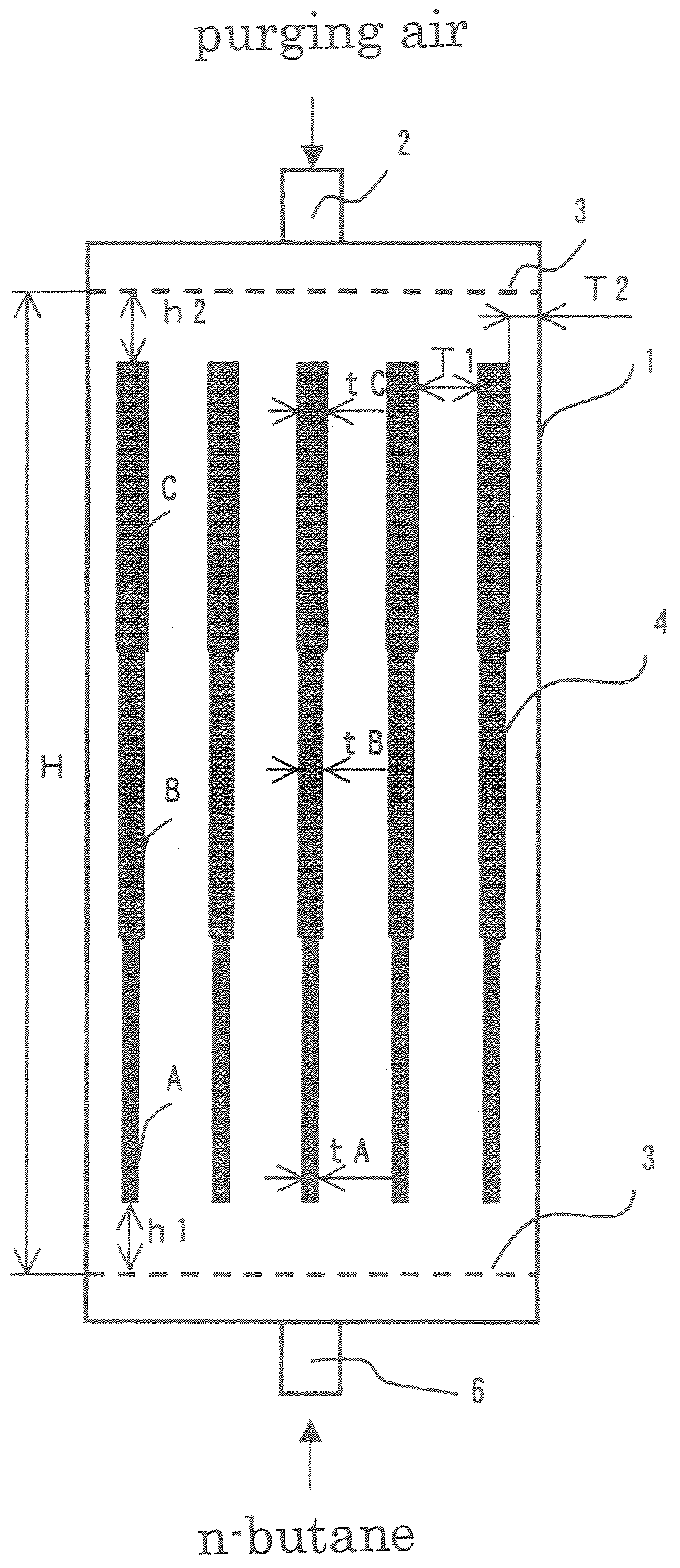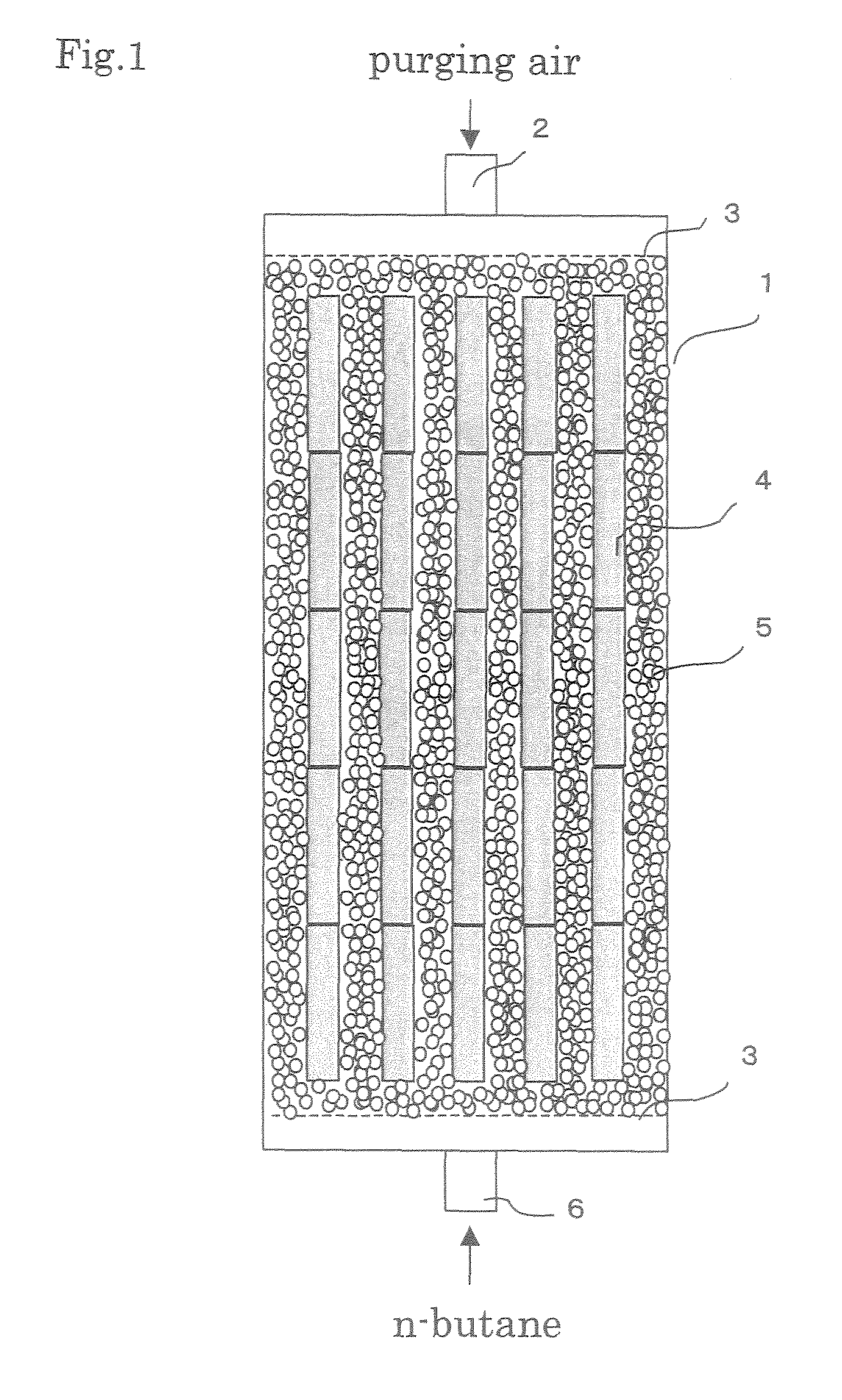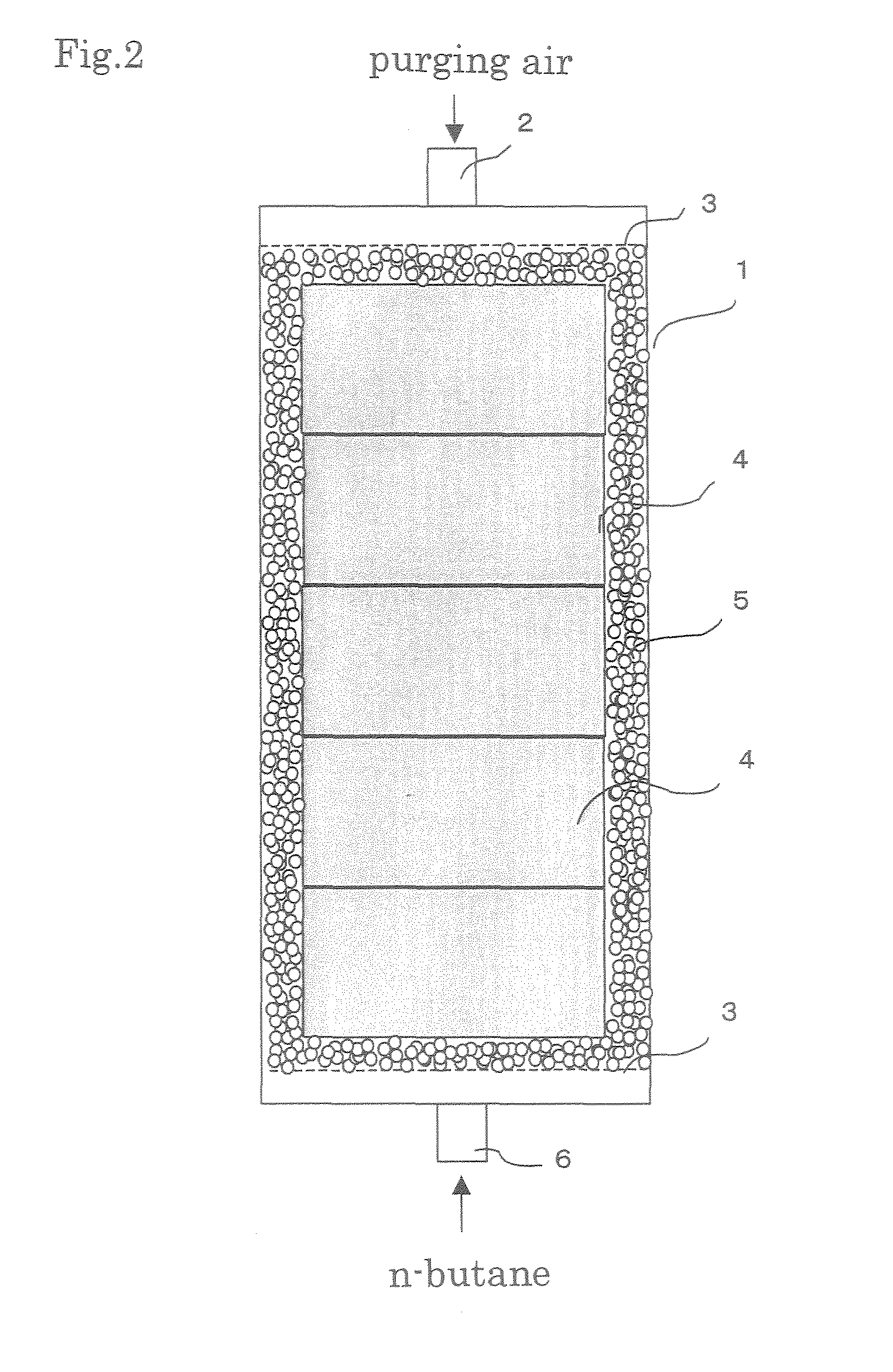Evaporated fuel gas adsorbent, evaporated fuel gas trapping apparatus, active carbon and process for producing the same
a technology of evaporation fuel gas and adsorption gas, which is applied in the direction of machines/engines, other chemical processes, separation processes, etc., can solve the problems of insufficient display of adsorptive material adsorptive adsorption and desorptive tendency, inconvenient use, and falling tendency of adsorptive material adsorptive adsorption and desorptive material, etc., to achieve effective control of heat caused by adsorption and desorption
- Summary
- Abstract
- Description
- Claims
- Application Information
AI Technical Summary
Benefits of technology
Problems solved by technology
Method used
Image
Examples
example 1
[0084]100 parts by weight of anthracite coal powder (0 crucible swelling number, 85% by weight fixed carbon content) whose ash content obtained by water washing was 2.5% by weight was mixed with 10 parts by weight of pitch and 25 parts by weight of coal tar. The resulting mixture was molded into cylindrical pellets each of which is 3 mm in diameter and 3 to 10 mm in length by use of a ring type pelleter produced by Ueda Steel Co., Ltd. These pellets were used as the raw material of activated carbon. The raw material was carbonized by being heated to 750° C. for three hours.
[0085]Thereafter, the carbonized material was heated to 800° C. for five hours under the atmosphere of mixed gas consisting of 10% by volume carbon dioxide and 70% by volume nitrogen containing a 20% by volume water vapor, and continuously underwent the activation process for twenty hours without changes. Thereafter, the material was further heated to 980° C., and continuously underwent the activation process for ...
example 2
[0087]The material that had been molded and carbonized in the same way as in Example 1 was activated at 800° C. for 20 hours under the same mixed gas atmosphere as in Example 1. Thereafter, the material was further heated to 980° C., and continuously underwent the activation process for 18 hours. As a result, granular activated carbon was obtained (Sample 2). Physical properties of Sample 2 are shown in Table 1. The BWC / ASTM of Sample 2 was 15.0.
example 3
[0088]The material that had been molded and carbonized in the same way as in Example 1 was activated at 800° C. for 20 hours under the same mixed gas atmosphere as in Example 1. Thereafter, the material was further heated to 980° C., and continuously underwent the activation process for 12 hours. As a result, granular activated carbon was obtained (Sample 3). Physical properties of Sample 3 are shown in Table 1. The BWC / ASTM of Sample 3 was 13.0.
PUM
| Property | Measurement | Unit |
|---|---|---|
| latent heat of fusion | aaaaa | aaaaa |
| pore diameter | aaaaa | aaaaa |
| pore diameter | aaaaa | aaaaa |
Abstract
Description
Claims
Application Information
 Login to View More
Login to View More - R&D
- Intellectual Property
- Life Sciences
- Materials
- Tech Scout
- Unparalleled Data Quality
- Higher Quality Content
- 60% Fewer Hallucinations
Browse by: Latest US Patents, China's latest patents, Technical Efficacy Thesaurus, Application Domain, Technology Topic, Popular Technical Reports.
© 2025 PatSnap. All rights reserved.Legal|Privacy policy|Modern Slavery Act Transparency Statement|Sitemap|About US| Contact US: help@patsnap.com



